Turning Cacao Beans into Cocoa Bars
In the Kitchen with the Bean-to-Bar Makers of Santa Barbara's Twenty-Four Blackbirds Chocolate
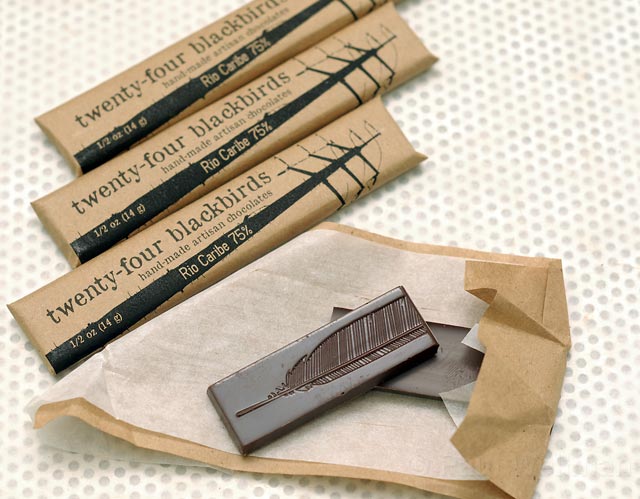
For a heavenly delight as sweet and simple as a chocolate bar, there’s no shortage of hellishly complicated steps required to make it properly melt in your mouth. From negotiating with brokers in politically confusing countries over the price of raw fermented beans to determining exactly how long to refine each batch’s nibs and what degree the resulting cocoa butter should be tempered at, the chocolate-maker must be more detail-oriented scientist than happy-go-lucky candy cook. Good thing, then, that Mike Orlando’s an analytical chemist by training.
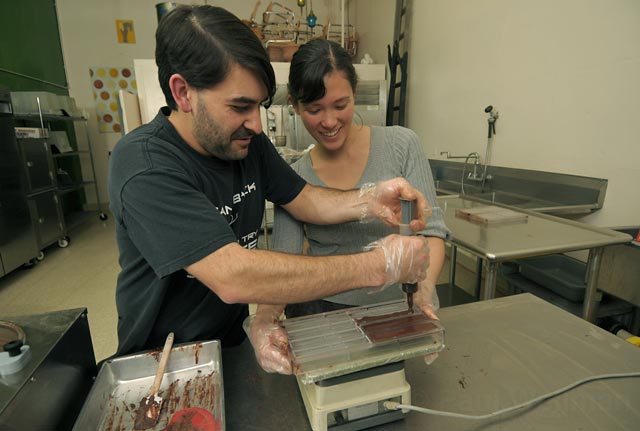
Last year, the 34-year-old started Twenty-Four Blackbirds Chocolates with his girlfriend Elaine Madsen and sister Gina, making them Santa Barbara’s only bean-to-bar chocolate makers—as compared to chocolatiers, who work with already-made chocolate—and one of just a handful in the entire state. “It’s all done by hand,” said Orlando of the laborious process of turning cacao beans into chocolate bars. “That’s the level of attention we’re giving to our product.” The venture—which was egged on by Julia Mayer of the French Press, the downtown coffee shop that first retailed these chocolates—proved immediately successful. “We can’t keep up with the demand,” said Orlando, who’s been able to produce about two 40-pound, 1,200-bar batches per week and now sells them for about $2 a piece in Los Angeles and San Francisco, too. “Every shop we’ve been in so far just sells out.”
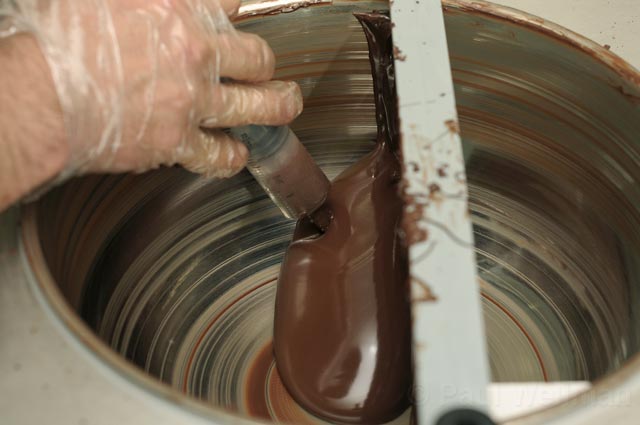
But in 2011, the people of Twenty-Four Blackbirds have been stepping up their game: In January, Orlando quit his UCSB lab job to focus on the business and the team moved into a sparklingly clean commercial kitchen on the edge of the Funk Zone at East Yanonali and Santa Barbara streets. “Our biggest constraint was that we both worked full-time and did this at night,” said Orlando of last year’s routine (Madsen still works at Loop & Leaf, a yarn-and-tea store on Brinkerhoff Ave.). And the move from a not-so-nice, now-demolished kitchen behind the old Cominichi’s on Cota Street was critical because chocolate is such a sensitive product, able to absorb smells while aging and easily affected by changes in temperature or humidity. “This was an absolute necessity for chocolate making,” he explained. “It’s essentially a brand-new facility.”
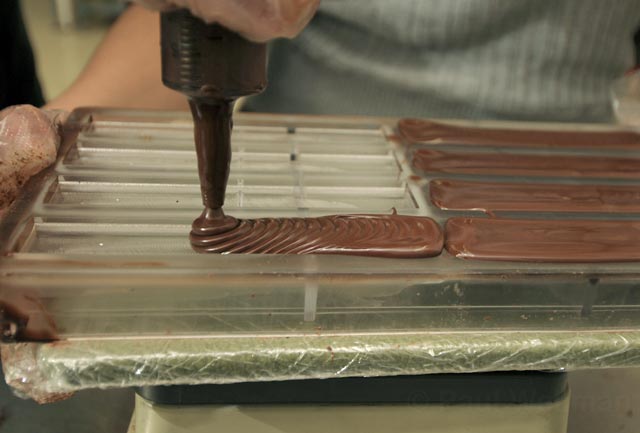
It’s a welcome departure from the early days when they used such household appliances as a juicer, hair dryer, and vacuum cleaner to process the fermented beans into skinny bars. Okay, some of those devices still find their way into the process, and most of their equipment still requires a bit of creative rigging because “chocolate equipment is not cheap,” said Orlando, who estimates that the cheapest devices start around $20,000. “This is totally self-funded, and we’re not independently wealthy at all.”
But they do have their own grinder (which turns the nibs into liquid cocoa butter and runs for as long as 96 hours straight, depending on the beans’ needs) and a digital tempering machine (which melts the aged chocolate to the proper temperature in order to reform the crystalline structures so that it won’t melt in your hand). And they’ve got a line on a new source of cacao beans from Venezuela (last year’s were from Ghana), although Hugo Chavez’s politics were holding up a recent order from a farm there. This new connection—which is being turned into the “Rio Caribe 75%” bars now on shelves—puts them one step closer to the cacao plantation, so “there’s more guarantee of knowing where our beans are coming from,” said Orlando, who would one day like to visit the farms where he buys his beans and help educate the growers on how to improve their own standing.
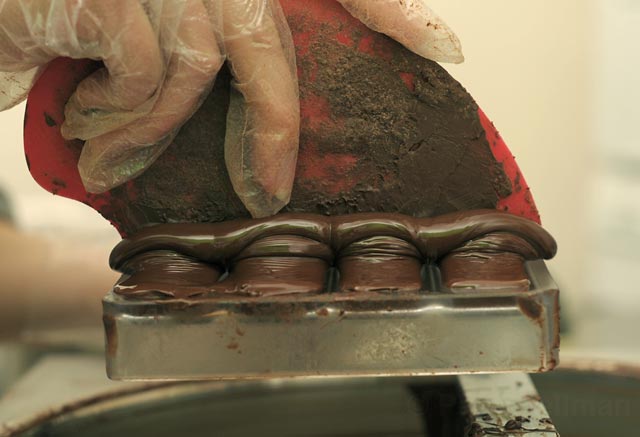
No matter where it comes from, though, good chocolate comes down to flavor, so Orlando and Madsen tried out 16 different cooking recipes for the Rio Caribe beans before settling on the current process. “The longer it refines, the more bland it gets,” said Orlando, who determined that the best refining time for the Venezuelan beans was about 24 hours (the Ghanaian beans took 48). “There’s an ideal refining time for every bean.”
Once tempered and molded into feather-decorated bars, Madsen handles the wrapping of the chocolate, which is intentionally sparse, consisting of just a brown wrapper with black type. “The packaging shouldn’t sell the product,” said Mike. “People who sell off image have short-lived customers. But if the product is good, which is what we’re going for, that’s much more important.”
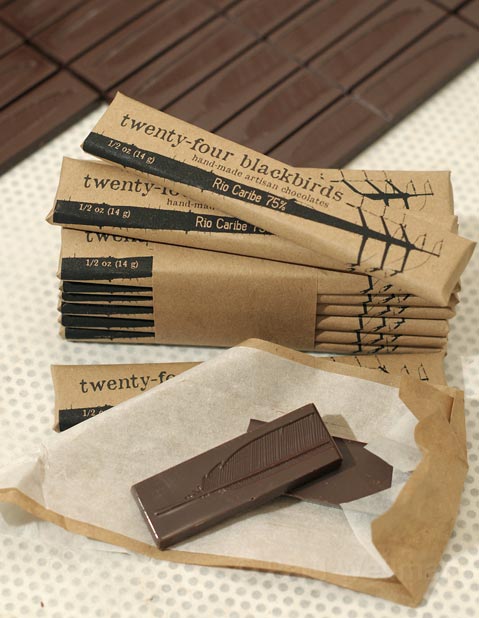
In addition to the dark chocolate bars, the Twenty-Four Blackbirds team plans to move in other directions, too, in this year: Gina, who lives in Santa Cruz, worries about going diabetic because she’s constantly sampling new flavors for the chocolate, and they might even try a white chocolate, but one that Mike actually likes. “We want to make chocolate more in line with our palates,” said Orlando, who prefers subtle to sugary. “We want to use the medium to the fullest.”
4•1•1
Twenty-Four Blackbirds Chocolates are available at the French Press, Municipal Winemakers, Chocolate Maya, and Loop & Leaf in Santa Barbara, as well as Verve Coffee in Capitola, Wally’s and The Winehouse in Los Angeles, and Chocolate Covered in San Francisco. See twentyfourblackbirds.wordpress.com.



